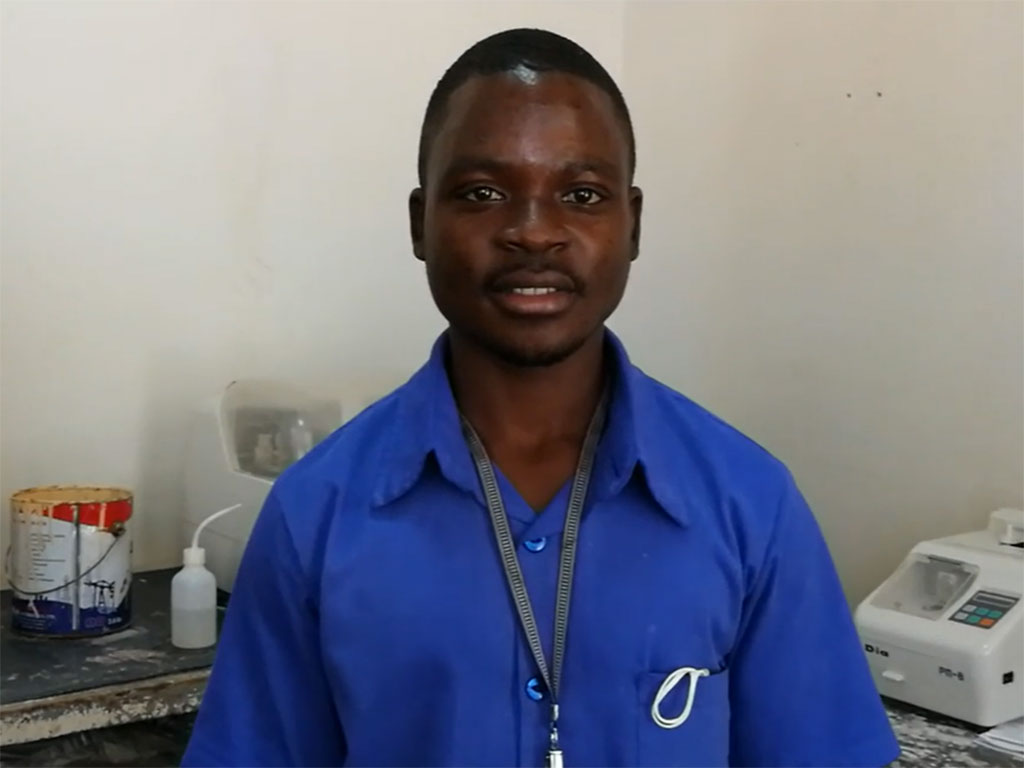Training in Ocular Prosthetics
Eduardo Mondlane University School of Medicine
Maputo,
Mozambique


With this course, not only will I be able to improve my own family’s life by practising a new profession, but I also hope to restore my patient’s appearance after their eye loss. Above all, I hope to help them recovering their self-esteem and confidence. Our work does make them feel better. This prospect of serving my people in this way makes me very happy.
Felizardo Felex Pinto,
Ocular Prosthetics Trainee
Why an ocular prosthesics training?
To complete the Master’s extention in oculoplasty and to enable comprehensive patient care: in sub-Saharan Africa, people affected by orbital tumours often arrive at consultations in such advanced stages that their eye is removed to save their life. After the operation, the aesthetic damage is such that only a prosthesis identical to the eye that was removed allows to regain a certain degree of normality.
There is no qualification in ocular prostheses as such, as it is a craft that is passed down from generation to generation. At OCULARIS, we are proud to rely on the Laiseca family to perform our trainings: pioneers in Spain since the middle of the 19th century, their first award for their work dates back to the Paris Universal Exhibition of 1889.
Training development
This training is performed in parallel with the sub-specialisation in Oculoplasty, as the two disciplines are complementary. Ophthalmologists and prosthetists must work hand in hand to provide their patients with the prostheses best suited to their morphology.
PHASE 1:
FITTING OF PROSTHESES
Capacitación básica de personal técnico procedente de distintas regiones del país: saber adaptar una prótesis prefabricada al ojo de cada paciente para obtener un resultado lo más natural posible.
PHASE 2:
MANUFACTURE OF PROSTHESES
Further training for a technician at Maputo Central Hospital to be able to fabricate a custom-made prosthesis from scratch. He will become the first national trainer.
PHASE 3:
FABRICATION OF FACIAL EPITHESIS
This is a more complex type of prosthesis: it replaces the eye, but also the eyelid or part of the face. In addition to reproducing the exact skin tone and facial features, the prosthesis has to fit perfectly to avoid discomfort and chafing. This makes it essential for ophthalmologists and prosthetists to work together.

